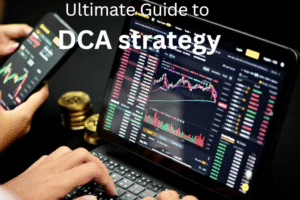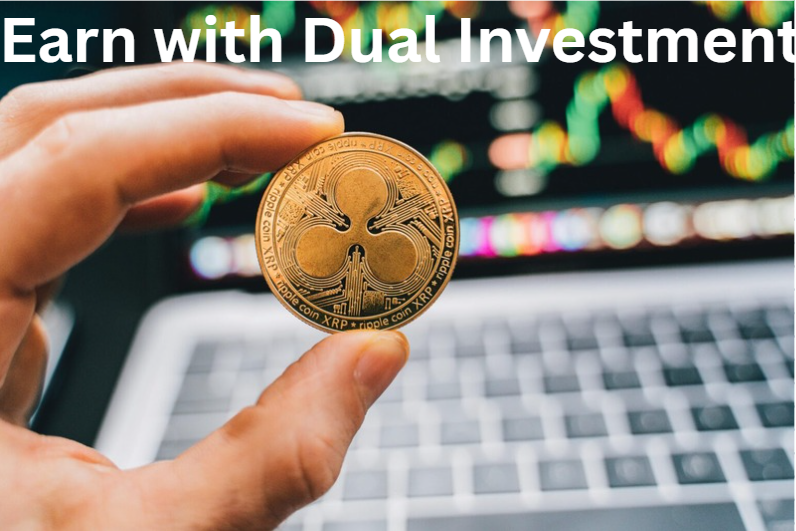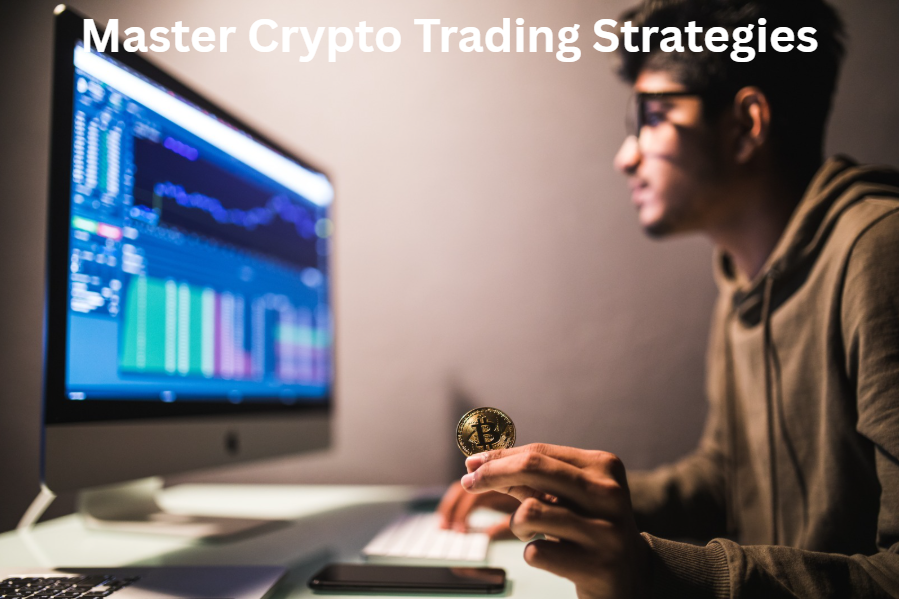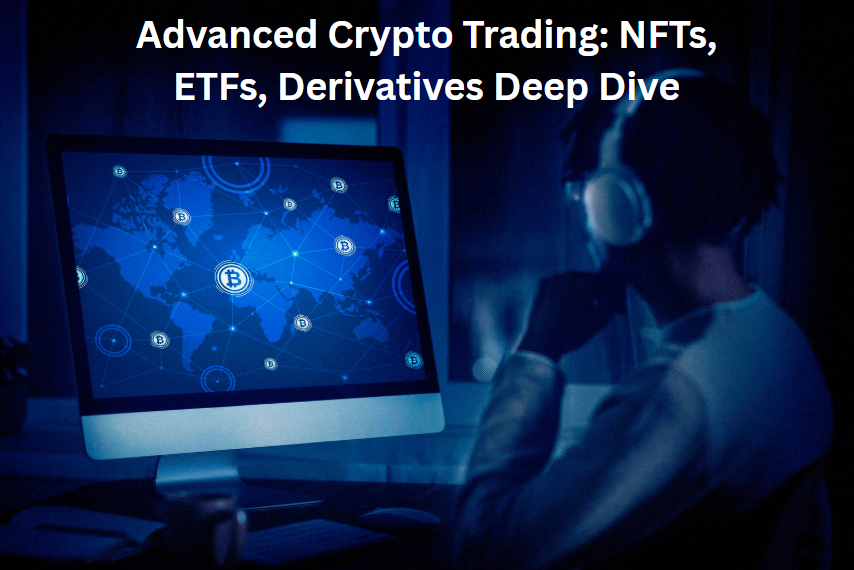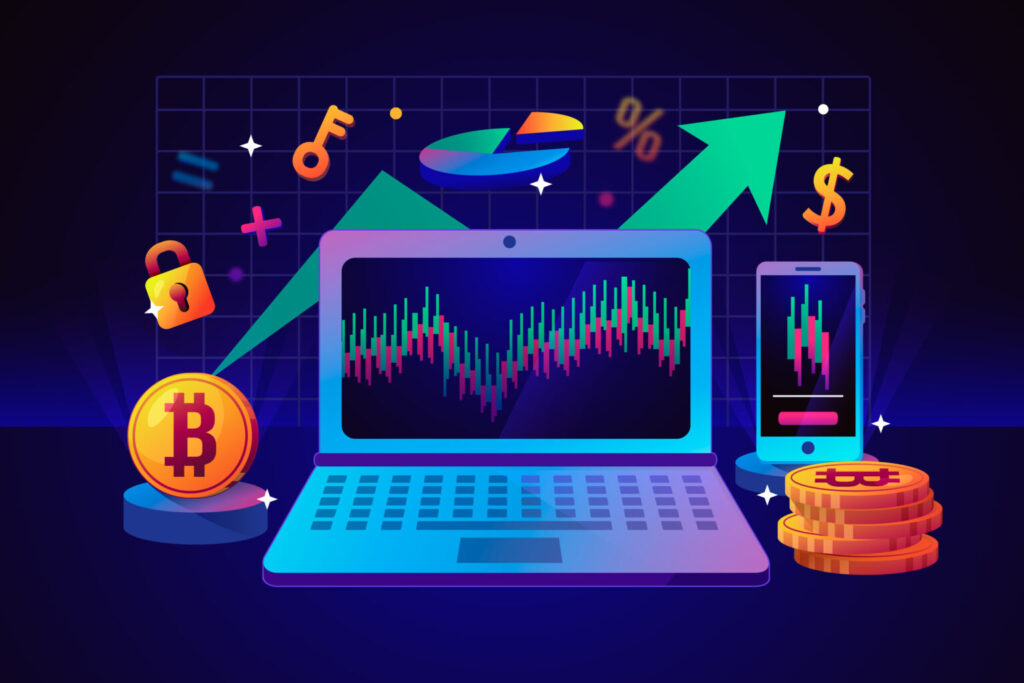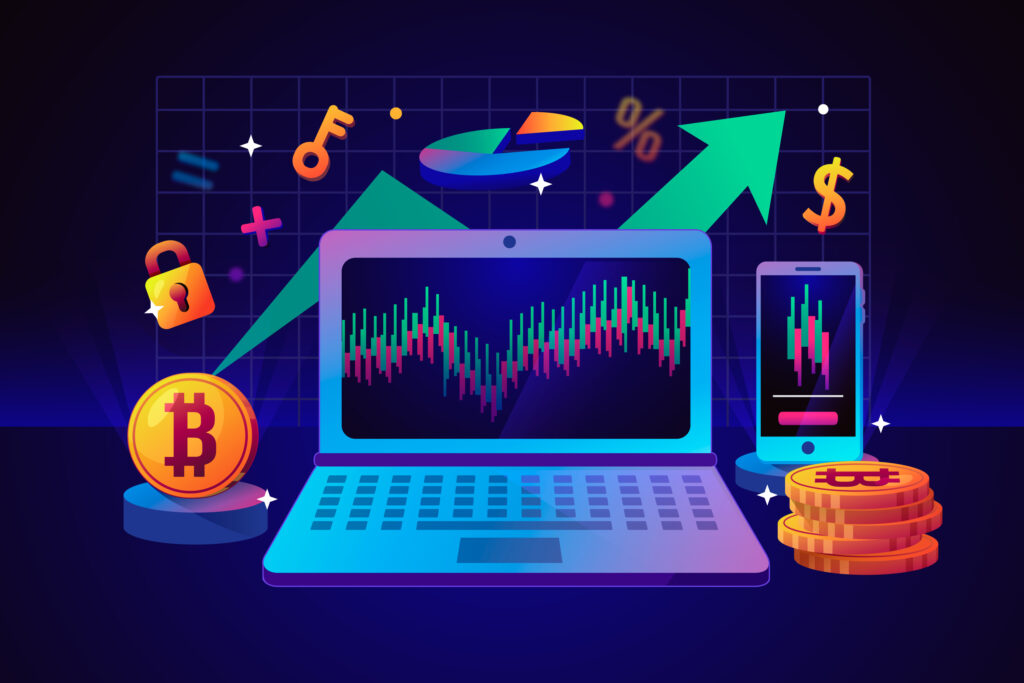Master Trading with Expert-Level Strategies & Tools
To make informed trading decisions, you need accurate market data and the right tools, such as technical indicators and order types. Successful traders often use technical analysis to spot optimal entry points for better profits. In this guide, you’ll discover top trading strategies and tools to help you capitalize on profit opportunities and passive income opportunities through DeFi.

What is Digital Asset Trading?
Digital asset trading involves the buying, selling, or exchanging of digital assets—such as cryptocurrencies, NFTs, or DeFi tokens—on blockchain-based platforms or cryptocurrency exchanges. These platforms facilitate trades between buyers and sellers, typically charging transaction fees.
Centralized exchanges use an order book system to match buy and sell orders and execute trades based on price, time, and specific order types (e.g., market, limit, stop orders). In contrast, decentralized exchanges (DEXs) operate through smart contracts that automate trade execution, enabling peer-to-peer transactions without intermediaries. Because DEXs are not operated by a centralized entity, they often charge lower fees, although users may still pay network gas fees depending on the blockchain.
Digital assets include:
- Cryptocurrencies (e.g., Bitcoin, Ethereum)
- Stablecoins (e.g., USDT, USDC)
- Non-Fungible Tokens (NFTs) (e.g., digital art, collectibles)
- Tokenized assets (e.g., real estate, equities, or commodities represented on a blockchain)
- Utility tokens (used to access services or functionalities within a blockchain ecosystem)
In recent years, as cryptocurrencies have grown in popularity as financial instruments, new forms of tradable digital assets have emerged to attract institutional investors and diversify revenue streams for financial firms. Exchange-traded funds (ETFs), futures contracts, and tokenized real-world assets are examples of this evolution, integrating traditional finance with blockchain technology.
How Digital Asset Trading Works?
On centralized exchanges (like Binance, Kraken, etc.), trades are executed through the order book system, which utilizes several order types for the convenience of traders. Users select a trading pair (e.g., BTC/USDT), place a buy or sell order, and the system matches it with a counterparty to execute the trade.
The speed and efficiency of trade execution—especially for large orders—depend on two factors:
- Matching engine performance: How fast the exchange processes and matches orders.
- Market liquidity: The availability of buyers and sellers at different price levels.
Both these factors, matching engine efficiency and liquidity, become important if you want to execute large trades—the ones that can significantly affect the price of the asset. For large-volume trades, insufficient liquidity or slow execution can lead to price slippage—a change in asset price between order placement and execution.
That’s why many centralized exchanges offer Over-The-Counter (OTC) services, so institutional investors or large investors can trade large amounts efficiently through dedicated matching engines with high liquidity.
Decentralized exchanges, in contrast, rely on smart contracts—pieces of code that execute trades automatically through liquidity pools, which are funded independently by liquidity providers who earn a portion of fees as an incentive.
Crypto Investment Calculator
Types of Trading
Spot Trading

Spot trading involves buying and selling cryptocurrencies at the current market price, with immediate ownership of the asset.
Options Trading

Options contracts give you the right, but not the obligation, to buy or sell an asset at a set price within a specific time.
Margin Trading

Margin trading allows you to trade with borrowed funds, increasing your buying power. While it can amplify profits, it also increases the risk of losses.
Futures Trading
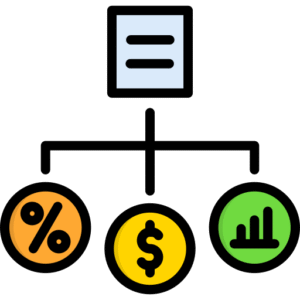
Futures trading enables you to speculate on the future price of crypto assets using contracts that settle at a predetermined date, allowing for both long and short positions.
Algorithmic Trading

Algorithmic trading uses automated programs to execute trades based on pre-set conditions like price, volume, or technical indicators.
Perpetuals Trading

Perpetual contracts are futures without an expiry date, allowing you to hold positions indefinitely and speculate on asset prices continuously.
NFT Trading
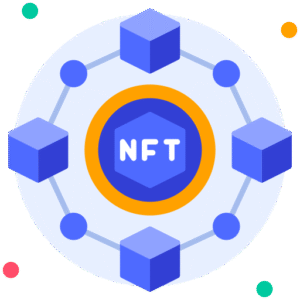
NFT trading involves the buying and selling of unique digital assets such as artwork, collectibles, and virtual real estate on blockchain-based marketplaces.
ETF Trading
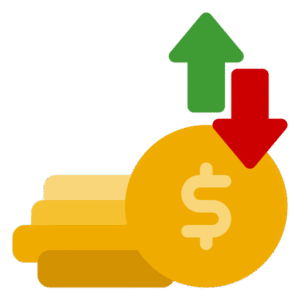
Crypto ETFs allow you to invest in a basket of cryptocurrencies through traditional stock markets. They provide diversification and simplified exposure without the need to manage individual coins.
Key Trading Strategies
Day Trading
In day trading, you invest in cryptocurrencies for shorter timeframes, typically hours, to capitalize on price movements occurring within that timeframe. Compared to long-term investment, it involves higher risks, as price swings can be sharp and fast, leading to quick gains or losses.
To make the most out of it, a structured approach is needed – setting lower price points for investment, certain higher prices for selling, and diversifying into multiple cryptocurrencies. Market, limit, and take-profit order types are well-suited for the day trading strategy.
DCA Investment
It is a strategy where you invest small amounts of money into crypto at regular intervals, averaging out the cost per unit and reducing the impact of price volatility on your investment. Before executing this strategy, you need to define the amounts to be invested and the intervals to target.
Diversifying into multiple cryptocurrencies is typically a better approach – it protects you from losses that may occur due to the market conditions of one crypto. Being a relatively low-risk strategy, it is well-suited for beginners who want to build exposure over time while avoiding the risks of trying to time the market.
Grid Trading
This strategy is similar to day trading, with the only difference being that your focus is on a specific price range rather than a timeframe. However, its timeframe can exceed a day if you don’t achieve your price goal within that time period.
In this strategy, you define a price range — for example, $115,000–$120,000 for BTC (based on current price trends) — and target the lower price for buying and the higher price for selling to make a profit. To execute this strategy, limit orders or stop-limit orders are well-suited, since these order types are designed to work within a grid or price range.
But the best approach is using grid trading bots rather than trading manually, to save time and avoid the hassle of monitoring the markets all day.
Automated Trading
This strategy involves the use of trading bots that execute trades based on predefined rules and strategies. These strategies may include grid trading, DCA (Dollar Cost Averaging), trend-following, or indicator-based trading.
Traders can customize bots with parameters such as:
- Specific entry and exit prices
- Technical indicators (e.g., RSI, MACD)
- Trade frequency and volume
An additional benefit that you get is speed and consistency of trades. Trading Bots are operating 24/7 and react fast to market conditions. Automated trading can reduce slippage and improve execution speed, but cannot fully eliminate slippage or liquidity risks—especially during periods of high volatility or low trading volume.
Arbitrage Trading
Arbitrage is a low-risk trading strategy that involves buying a cryptocurrency on one crypto exchange where the price is lower and simultaneously selling it on another exchange where the price is higher. You make profit from the temporary price discrepancy between the two markets. These discrepancies arise due to liquidity differences and local supply and demand imbalances.
Because arbitrage opportunities are short-lived and often small in margin, fast execution is crucial to make profit. Since manual arbitrage is challenging, many traders use arbitrage bots that monitor multiple exchanges and execute trades within milliseconds.
Arbitrage can also take different forms:
- Inter-exchange arbitrage: Buy on Exchange A, sell on Exchange B.
- Triangular arbitrage: Exploit price differences between three trading pairs on the same exchange.
- Cross-chain arbitrage: Use price gaps for the same token on different blockchains (e.g., ETH-USDT on Ethereum vs. Solana).
Portfolio and Risk Management
Portfolio management is all about allocating your money in different cryptocurrencies, adjusting the investments to achieve your return goals while staying within your risk tolerance. Professional traders allocate specific portions to different cryptocurrencies based on market conditions and a specific portion of their capital to derivatives and staking products, while also setting profit goals.
This approach requires making decisions based on how markets of different assets are performing, and whether profit goals seem achievable. It also becomes important to adjust allocations in response to market performance of certain assets, to increase chances of better returns. Being a sophisticated approach, it requires discipline and avoidance of emotional decisions when the market does not seem to be performing well for certain assets.
Best Practices for Spot Trading Portfolio Management
- Stop-loss orders: Automatically sell an asset if its price falls to a certain level to reduce losses.
- Position sizing: Not risking more than a certain percentage of the crypto portfolio on one trade or one cryptocurrency (commonly 1-2% per trade).
- Volatility filters: Avoiding trades during extremely volatile periods or after major news events.
- Stablecoin reserves: Keeping a portion of the crypto portfolio in stablecoins to preserve capital and deploy during market dips.
While derivatives trading is riskier since it involves speculating on asset price and often margin positions where you trade borrowed assets, certain practices can reduce risk. Ideally, allocating only a portion of your capital to derivatives trading, while allocating the rest to spot trading can be the best approach to reduce risk.
Best Practices for Derivatives Trading Portfolio Management
- Allocate limited capital: Use only a portion of your total portfolio for derivatives, keeping the rest in spot holdings or low-risk assets.
- Liquidation risk: Because leverage is involved, prices don’t have to move much for your position to be liquidated (especially with high leverage).
- Risk-reward ratios: Only taking trades where the potential reward outweighs the risk (e.g., 2:1 or better).
- Daily loss limits: Capping the amount you’re willing to lose in a single day or trade session.
- Cross vs. isolated margin: Using isolated margin to limit risk to one position, rather than risking your entire account with a cross-margin position.
Examples of Portfolio Allocation
Spot Allocation (60%)
Spot Allocation (70%)
Low-Risk Tactics | High-Risk Tactics |
Allocating a portion of your capital to stablecoin staking for predictable, passive yields (e.g., USDC/APR 5%) | Allocating capital to newly launched DeFi tokens or meme coins with high volatility and uncertain fundamentals |
Using grid trading bots with built-in stop-loss and take-profit orders to automate trades within defined price ranges | Manual day trading without predefined risk limits exposes assets to fast price swings and emotional decision-making |
Diversifying across top market-cap assets like BTC and ETH to reduce portfolio volatility | Concentrating holdings in low-capitalization or illiquid altcoins that can experience extreme price movements |
Applying leverage below 2x with isolated margin and strict liquidation thresholds | Using high leverage (10x or more) on perpetual futures, increasing the risk of liquidation from small price changes |
Employing hedging strategies (e.g., short futures to offset long spot holdings) | Speculating on directional moves without protection, risking large losses if the market turns suddenly |
Keeping a portion of funds in cold storage to preserve capital and reduce trading temptation | Keeping all capital on centralized exchanges, increasing exposure to platform risk or potential hacks |
Learn About Investment Strategies
In-Depth Strategy Guides
FAQ
📊 Portfolio Allocation Basics
A digital asset portfolio is a collection of various cryptocurrency investments, including cryptocurrencies like Bitcoin, Ethereum, altcoins, stablecoins, and crypto derivatives (futures, perpetuals, etc.). The goal is to diversify across different asset types and trading strategies to reduce risk and maximize potential returns.
Due to crypto price volatility, portfolio allocation plays an important role in managing risk. While some cryptocurrencies may perform well and generate good returns, others may underperform or incur losses. Distributing your investments across different cryptocurrencies and categories (e.g., Spot, Staking, Futures) helps protect your capital from extreme price swings while still allowing exposure to growth opportunities.
It depends on your experience, risk tolerance, and investment goals. A common moderate strategy is:
- 60% Spot for long-term holdings
- 20% Staking for passive yield
- 20% Futures for short-term gains (higher risk)
Beginners should rely more heavily on Spot and reduce Futures exposure since futures trading is riskier.
Yes. Beginners should focus more on low-risk strategies:
- 70–80% Spot
- 10–20% Staking
- 0–10% Futures or none at all
This approach prioritizes learning while minimizing risk. There are certain investment tools that can be helpful for beginners who want to make decent profits while avoiding volatility risk. For example, Binance Auto-investment uses DCA strategy and helps users automate regular investments in an asset to reduce impact of price volatility.
Most investors review monthly or quarterly. Rebalancing adjusts allocations based on market conditions— such as selling outperformers. But rebalancing must be based on market performance of assets not personal preference.
💱 Spot Trading
Spot trading involves buying or selling crypto asset at the current market price. Ownership of the asset is transferred immediately, and the trader can hold or move the asset freely. It’s the most basic and widely used form of crypto trading.
Spot assets are ideal for long-term holding because they’re less volatile than derivatives and don’t involve leverage or margin positions. They’re simpler to manage and not subject to liquidation risk like futures. Spot trading is also ideal for beginners and those with less exposure to advanced trading strategies.
- Pros: Full ownership of assets, simplicity, lower fees, can be staked for yield
- Cons: Limited short-term profit potential, subject to market volatility.
- HODLing: Long-term holding regardless of market price volatility
- Dollar-Cost Averaging (DCA): Investing fixed amounts at regular intervals
- Swing Trading: Medium-term trades based on price patterns and technical indicators.
📥 Staking
Staking means locking up your crypto in a blockchain network to support operations such as transaction validation. In return, you earn rewards, typically in the form of more coins. It’s similar to earning interest on a savings account.
Assets from proof-of-stake blockchains such as Ethereum (post-merge), Solana, Cardano, Polkadot, and Avalanche are common staking assets. Many DeFi tokens can also be staked through liquidity pools or protocol-specific mechanisms. For example, CAKE is a DeFi token that can be staked in PancakeSwap’s Syrup Pools to earn rewards, or it can be paired with another token (like BNB or USDT) to provide liquidity in Liquidity pools. In the latter case, users earn transaction fees and may also earn additional CAKE tokens as incentives, thereby supporting liquidity while also earning rewards.
- Lock-up periods: Assets may be inaccessible for a time
- Validator issues: Slashing or downtime may reduce rewards
- Price volatility: The coin’s value may drop while it is staked.
Staking can offer passive returns higher than simply holding, but adds risks related to validator performance, smart contract security, and market price fluctuations. Spot holding is simpler but doesn’t generate returns unless combined with staking.
📈 Futures and Derivatives
Futures trading involves trading contracts that let you speculate on the future price of crypto assets without owning them. You can go long (bet price will rise) or short positions (bet price will fall). Futures often involve leverage, increasing both potential returns and risks.
- Perpetual Futures: No expiry date; kept in synchronization with spot prices via funding rates
- Standard Futures: Have fixed expiration and settlement dates
Perpetuals are often preferred over futures due to their flexibility and 24/7 nature.
Options give you the right, but not the obligation, to buy or sell at a specific price by a specific date. Futures contracts require execution unless closed early. Options products are more complex but can be used for hedging and strategic positioning.
- Rewards: Small price movements can provide big profits
- Risks: Losses are magnified; liquidation can occur quickly if the market moves against your position
Leverage requires disciplined risk management and should only be used by professional traders.
Generally, no. Futures involve complex mechanics and higher risk compared to spot trading. Beginners should focus on Spot trading and possibly Staking until they build experience and a solid understanding of crypto market behavior.
📦 ETFs, Index Tokens & Passive Products
These are bundled investment assets that track a group of crypto assets. Investors buy shares or tokens representing the basket instead of managing each asset individually. This approach enables portfolio diversification without the need to directly hold each asset.
They offer exposure to multiple cryptocurrencies in one product, making it easier to diversify and reduce risk compared to holding just one or two crypto assets.
They can be safer due to asset diversification but still depend on the underlying assets and provider integrity. They also may have fees or limited flexibility compared to direct asset ownership (like spot trading).
🚨 Risk Management & Liquidity
Liquidity measures how easily you can buy or sell an asset without affecting the price. High liquidity means faster, smoother trades. Low liquidity means price slippage, slower exits, and increased risk — especially in volatile markets.
Price volatility influences both risk and reward. Allocating higher percentages of your portfolio to volatile assets increases potential gains but also downside. Stable allocation strategies help buffer against extreme price swings.
Stablecoins are crypto assets pegged to real world assets such as fiat currencies like USD. They’re often used for risk-off strategies, holding cash reserves, earning passive yield via DeFi, or quickly entering/exiting positions without leaving the blockchain.
- Diversify between Spot, Staking, and Futures
- Set portfolio limits on high-risk assets
- Use stop-losses and take-profit order types.
- Avoid overleveraging or overtrading
- Allocate some of your capital to stablecoin staking for predictable returns.
🤖 Tools, Automation & Strategy
Many platforms offer portfolio bots or rebalancing tools that allocate assets based on the rules you set. Some integrate risk metrics or market signals for smarter automation.
Popular platforms include:
- Shrimpy – for smart rebalancing and indexing
- 3Commas – for DCA, grid bots, and advanced portfolio tools
- CoinStats – tracker with auto-sync and automation
- Binance & OKX – exchanges with in-built allocation tools
DCA strategy involves investing fixed amounts at regular intervals regardless of price movements. It reduces the impact of market timing and helps smooth out volatility over time. Ideal for beginners and long-term investors.
There are several portfolio trackers you can use. Such as:
- CoinStats
- CoinLedger
- Delta
- Kubera
These tools connect with wallets and crypto exchanges, providing real-time analytics, allocation charts, and trading performance history.
